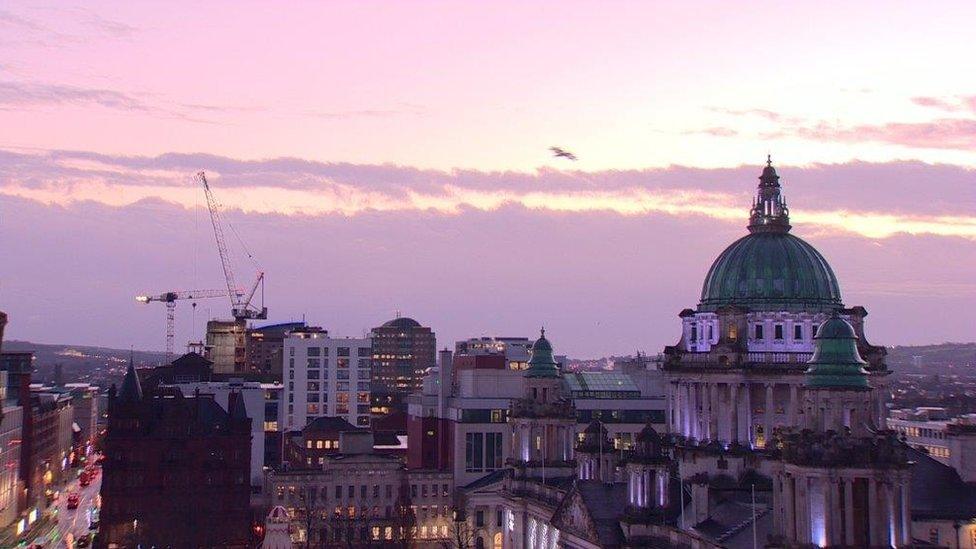Public asked about design of £100m tourist centre
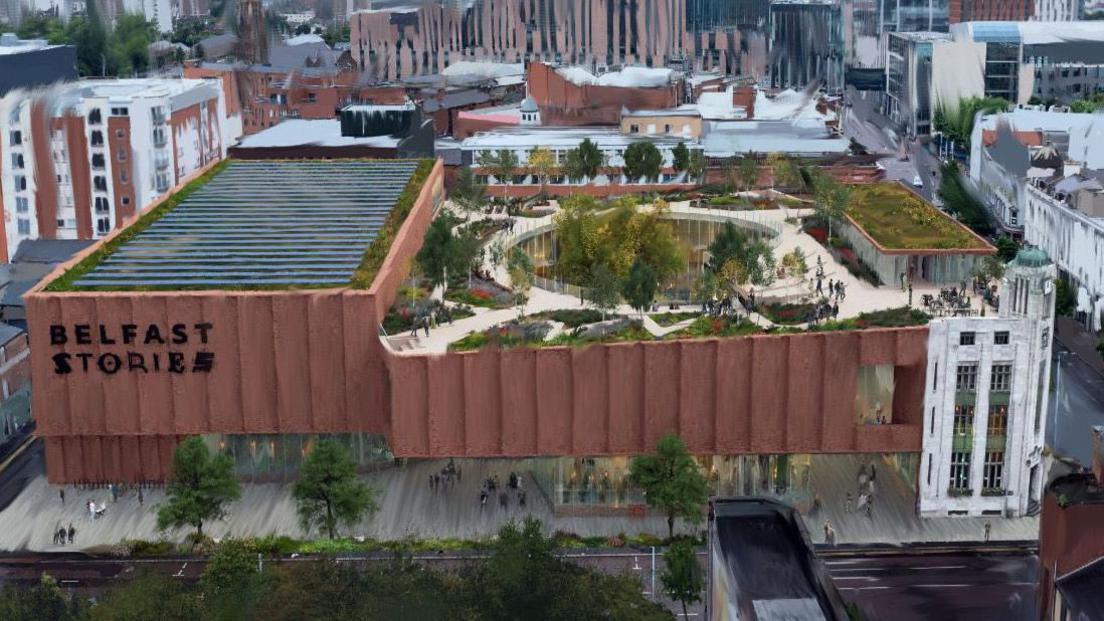
Belfast Stories is expected to open in 2030
- Published
People in Belfast are being asked to give their views on the proposed design of a new £100m visitor attraction in the city.
The Belfast Stories centre will use words, pictures and sounds to illustrate the city’s past, present and future.
It is expected to open by 2030 and will be based at the site of the former Bank of Ireland building at the junction of Royal Avenue and North Street.
The proposed design of the centre has been released, and the Belfast public invited to give feedback.
If successful, the project will create a second major attraction in the city along with the Titanic Belfast visitor centre.
In the design, the existing bank structure is retained.
In and around it are galleries to tell stories about Belfast, plus a creative hub, a roof garden and event spaces.
'They can influence'
Wendy Langham, programme director of Belfast Stories, said she wanted the project to bring people together, boost tourism and enhance the city’s international reputation.
On the proposed design, she said: "These are early concepts so it means that we can still make changes.
"We’re out to public consultation because we want to hear the voices of people across the city.
"They can influence what is actually going to be in Belfast Stories when we open in 2030."
The aim is to begin construction in 2027.
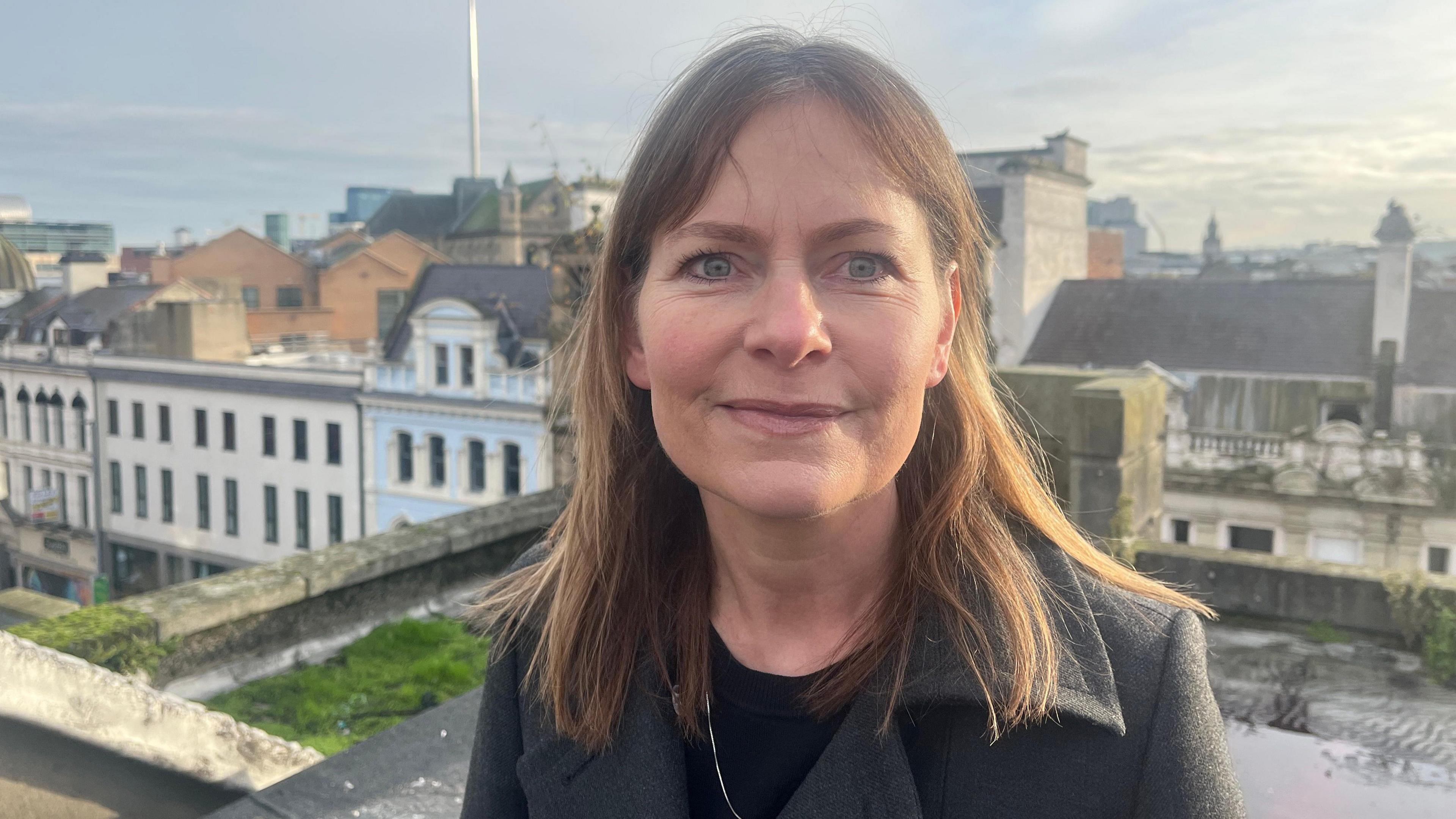
Belfast Stories programme director Wendy Langham encouraged people to answer the consultation
Plans to turn the old building, which dates back to the 1920s, into a modern visitor attraction were first revealed three years ago.
The old bank is just a small part of the site, amounting to almost 5,000 sq m in total, beside the existing Belfast Central Library.
Ms Langham said: "This is one of the beautiful heritage buildings of the city.
"It is referred to as the Angel of the City or the Little Empire because allegedly it is modelled on the Empire State building (in New York) so it’s one of the very few Art Deco buildings left and we need to protect that for future generations."
She said she was confident that funding for the project would be secured.
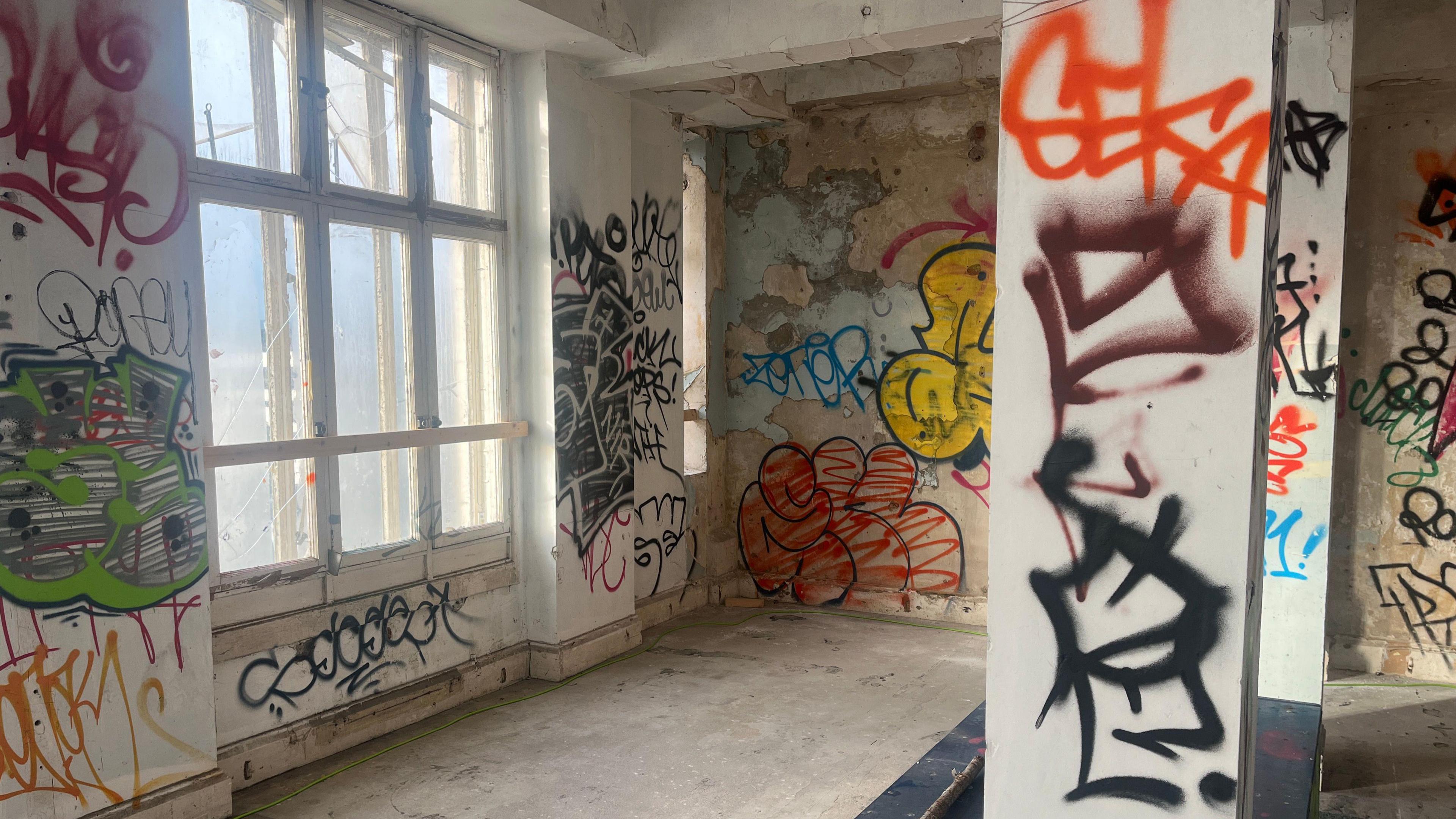
The project aims to restore the listed Art Deco former Bank of Ireland building on Royal Avenue
The project, once the design and cost is finalised, will need formal approval, including planning permission.
The plan is for the creative hub to be used by writers, artists, musicians and filmmakers.
Much of the focus will be on attracting visitors to the building, with a target set of 700,000 a year.
Lord Mayor of Belfast Micky Murray believes the centre can "revolutionise" part of central Belfast.
"Belfast Stories is a project that our city has been crying out for and it’s being made possible thanks to the Belfast region city deal investment," he said.
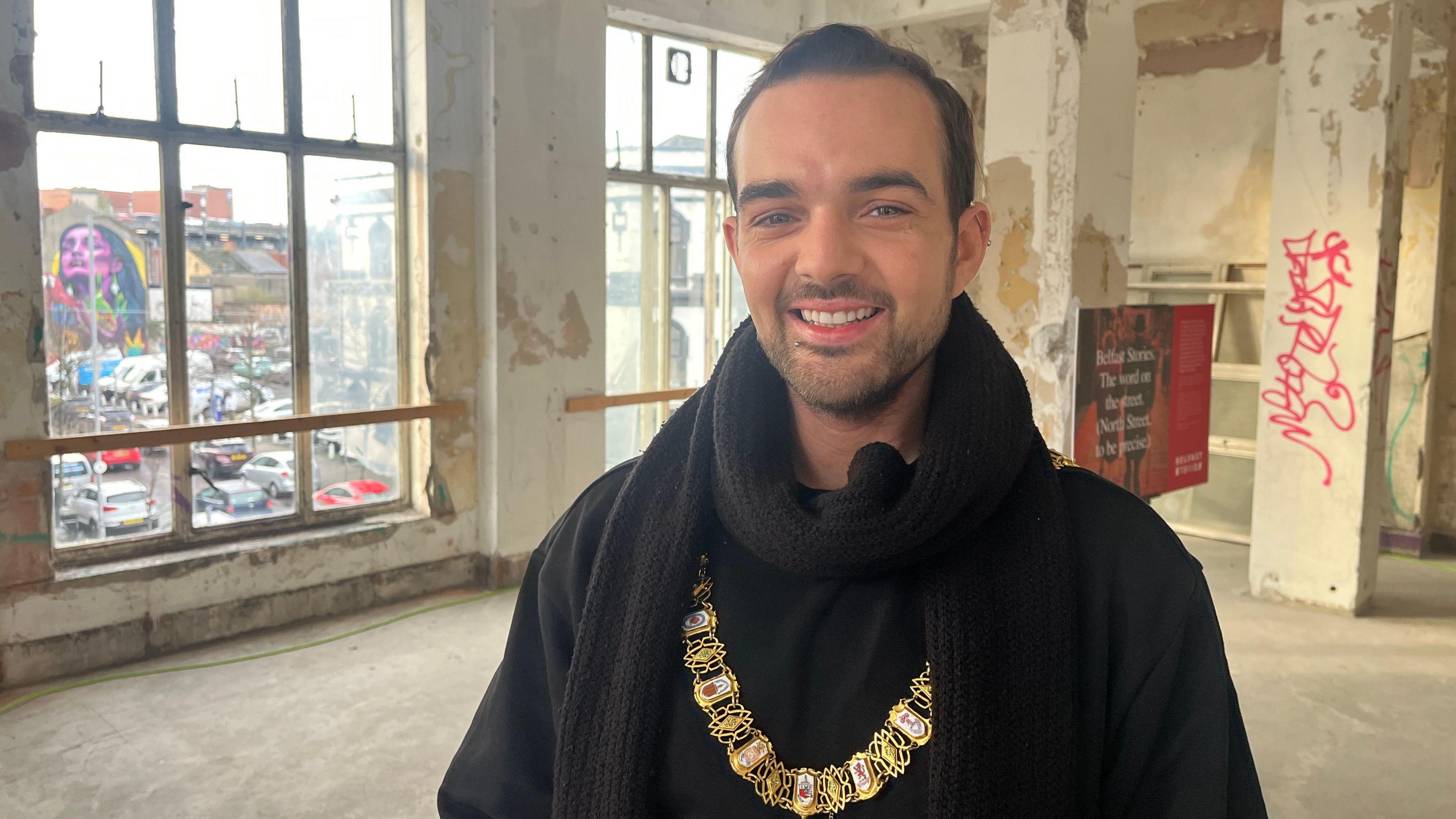
Belfast Lord Mayor Micky Murray said the centre would be good for Belfast
The design team of Belfast Stories includes a partnership between Oslo-based Snøhetta and Belfast-based TODD architects.
The previous Lord Mayor, Sinn Féin's Ryan Murphy, promised that the "warts and all" history of the city would be told.
The public consultation will run for 14 weeks, external and closes on 23 February next year.
Related topics
- Published17 December 2021

- Published7 November 2023
